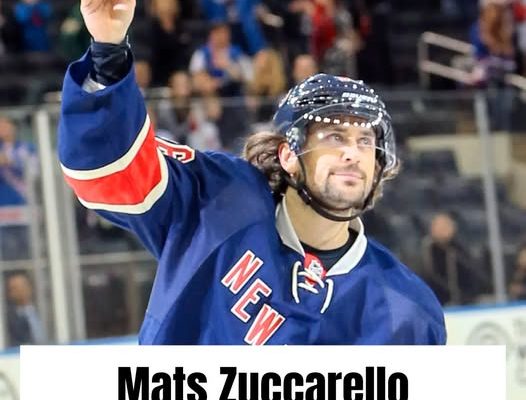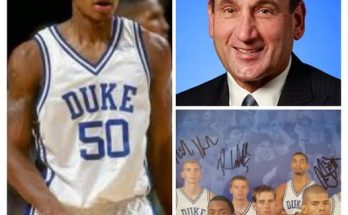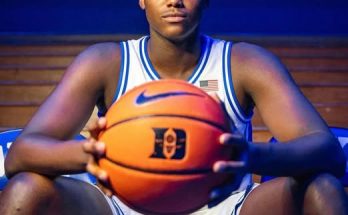The New York Rangers have seen their share of roster changes over the decades, but the 2025 offseason has delivered a level of turnover that even the most seasoned Blueshirts fans weren’t fully prepared for. What began as whispers about contract disputes, aging veterans seeking one last payday, and younger talents chasing bigger opportunities has now transformed into a full-scale exodus. The beloved core that brought the team relevance and playoff runs in recent years has been dismantled, sending familiar faces to rival cities, distant markets, and even international leagues. The collective departure of these players has left Madison Square Garden quieter in spirit, even if the seats will inevitably be filled when the puck drops this fall. The sense of loss is palpable, and many loyal supporters have described it as the official end of a chapter in Rangers history.
For years, the Rangers’ blueprint was built around a blend of star power and gritty depth, a formula that carried them through the highs of conference finals appearances and the lows of early playoff exits. The fan base had embraced the personalities as much as the performances. These weren’t just names on the roster; they were part of the city’s sports fabric, woven into conversations at delis, sports bars, and subway rides after games. When one or two key players leave in an offseason, fans can brace themselves. But when half a dozen or more move on—many of them faces of the franchise—the emotional toll is something different entirely. This summer has been exactly that kind of gut punch.
It started with the free agency market opening and the first bombshell dropping: a long-time cornerstone signing a multi-year deal with one of the Rangers’ fiercest Eastern Conference rivals. The move instantly ignited debates online and on talk radio about loyalty, money, and the team’s direction. From there, the departures snowballed. A top-six forward opted to chase a lucrative contract in the Western Conference. A stalwart defenseman decided to return to his home country and finish his career in the European leagues. A fan-favorite grinder inked a deal with a Canadian team in need of playoff toughness. Even younger, developing talents—supposedly part of the team’s future—were packaged in trades or left unsigned, signaling a complete retooling of the roster.
For those inside the organization, this wasn’t a decision made on a whim. Management had been signaling a pivot toward youth and flexibility for months, perhaps sensing that the current core had peaked without breaking through to Stanley Cup glory. Still, the execution of the turnover has been swift and, for many, jarring. Teams often speak about “windows” of contention—periods when the roster is optimized to make a deep run. For the Rangers, that window appears to have closed faster than most expected, and the front office’s willingness to close it themselves in order to reset has sparked as much criticism as it has cautious optimism.
The impact on the fan base is layered. Older fans, who have lived through decades of similar cycles, have reacted with a mix of resignation and nostalgia. They recall the trades and departures of the ’90s and 2000s, when stars came and went in rapid succession. Younger fans, however, who grew up with this most recent group of Rangers as their heroes, are taking it harder. Social media timelines are filled with tribute videos, highlight reels, and heartfelt messages thanking the departing players for their contributions. Jerseys that were once worn proudly to the Garden now serve as bittersweet reminders of a different time, just a season or two ago, when the team seemed on the brink of something bigger.
The destinations of these former Rangers are as varied as their styles of play. One has gone to a rival in the Metropolitan Division, almost ensuring a wave of boos when he returns to MSG. Another has joined a small-market team in the Midwest, where he’ll take on a leadership role he never quite claimed in New York. A third has made the jump overseas to join a powerhouse in the KHL, while another heads to the Swiss league, trading the bright lights of Broadway for alpine serenity. A couple of younger players, meanwhile, have found themselves on rosters where they’ll get more ice time, though perhaps less exposure. The scattering of these players across the hockey world is part of what makes this offseason so unique—it’s not just a few going to the same destination, but an entire constellation of talent dispersing in every direction.
From a purely strategic standpoint, there’s logic in the Rangers’ moves. Clearing cap space now allows for more aggressive plays in future offseasons. Draft capital acquired in trades gives the front office flexibility to build a younger, faster roster. Development opportunities will open up for prospects who have been waiting in the wings. And with the NHL trending toward speed and skill, the reset may align better with the league’s evolution. But logic often takes a backseat to emotion in sports, especially in a city like New York, where players who connect with fans become as much a part of the cultural landscape as the skyline itself.
Some of the former players have already addressed the fan base through social media, offering thanks and expressing their own sadness at leaving. They speak of memories forged in playoff battles, the adrenaline of scoring big goals at home, and the unmatched roar of MSG during a late-game comeback. Others have been more reserved, hinting that their departures weren’t entirely voluntary, a reminder that professional sports are as much a business as they are a passion. For those who landed on rival teams, there’s an undercurrent of anticipation for their returns—both for the on-ice drama and for the reception they’ll receive from fans who once adored them.
Meanwhile, inside the Rangers’ locker room, the dynamic has shifted dramatically. Veterans who remain are now tasked with mentoring a younger, less experienced group, while also processing the absence of friends and long-time teammates. The coaching staff faces the challenge of blending new acquisitions with holdovers and ensuring that the team identity doesn’t dissolve entirely during the transition. Training camp will be a proving ground, not only for individual players but for the organization’s new direction as a whole.
For the NHL as a whole, the dispersal of this Rangers core adds intriguing storylines to the 2025-26 season. Several teams now boast a former Blueshirt in their lineup, and matchups against New York will carry added emotional weight. Media narratives will be quick to frame these games as personal, highlighting past connections and what they mean in the context of the league’s ever-shifting rivalries. The Rangers, for their part, will have to weather both the on-ice challenges and the off-ice scrutiny that comes with such a visible transformation.
The fans, as always, will adapt, though not without some longing for the days when these familiar names donned the iconic blue, white, and red. Sports have a way of forcing people to let go, whether they’re ready or not. And yet, the same cycle that brings loss also brings renewal. Somewhere in the Rangers’ pipeline is the next player who will capture hearts, the next unexpected hero who will score that unforgettable goal, the next captain who will lift the team toward contention. It may take seasons to rebuild the same level of connection, but the hope is that the payoff will be worth it.
As the 2025-26 season begins, Madison Square Garden will still be filled with chants, cheers, and the smell of popcorn and beer. The jerseys in the stands may feature more recent acquisitions, but there will always be a smattering of those bearing the names of players now scattered across the hockey world. And when the puck drops, the Rangers will skate forward into their new era, even as echoes of the past linger in the air. The departures of this offseason will be remembered not just for the talent lost, but for the memories each player left behind—a reminder that in sports, as in life, eras end, but the spirit of the game carries on.



